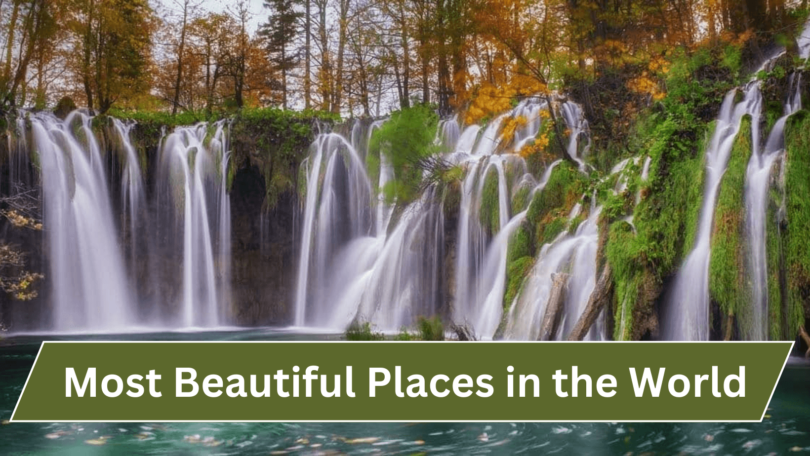In this article, we embark on a journey to explore the top 10 most beautiful places in the world, where the wonders of nature and human ingenuity combine to create unforgettable landscapes that leave visitors in awe.
The world is filled with breathtaking landscapes that captivate the imagination and stir the soul.
From towering mountains to pristine beaches, and from ancient forests to vibrant cities, our planet boasts an array of awe-inspiring destinations that showcase nature’s boundless creativity.
Most Beautiful Places
- The Grand Canyon, USA – A Geological Marvel
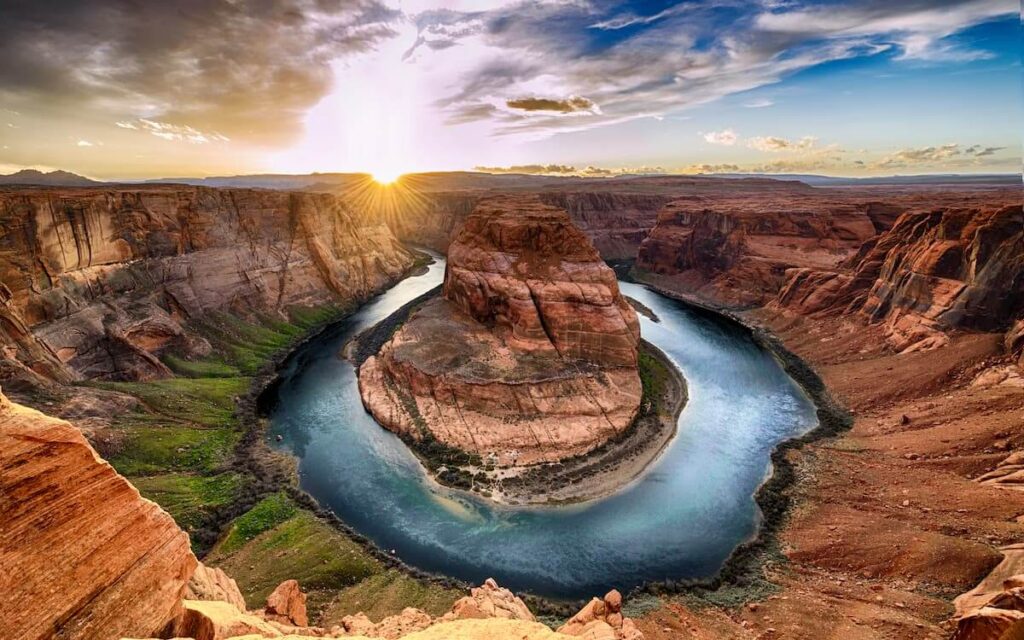
The Grand Canyon in Arizona, USA, is a testament to the forces of erosion and time. Carved over millions of years by the Colorado River, this immense canyon reveals mesmerizing layers of rock that seem to stretch into eternity.
The Grand Canyon was carved out by the Colorado River over millions of years. The process of its formation is primarily attributed to the erosive power of the river cutting through layers of sedimentary rock.
The exact age of the Grand Canyon is still debated among geologists, but the general consensus places its formation to around 5 to 6 million years ago.
One of the cool places of the world, Its most striking features of the Grand Canyon is the exposed layers of rock that reveal a vast swath of Earth’s geological history.
The canyon walls expose nearly 2 billion years of rock layers, ranging from ancient, tightly folded layers of Vishnu Schist at the bottom to younger sedimentary rock layers at the top.
- The Northern Lights, Iceland – Nature’s Dazzling Light Show
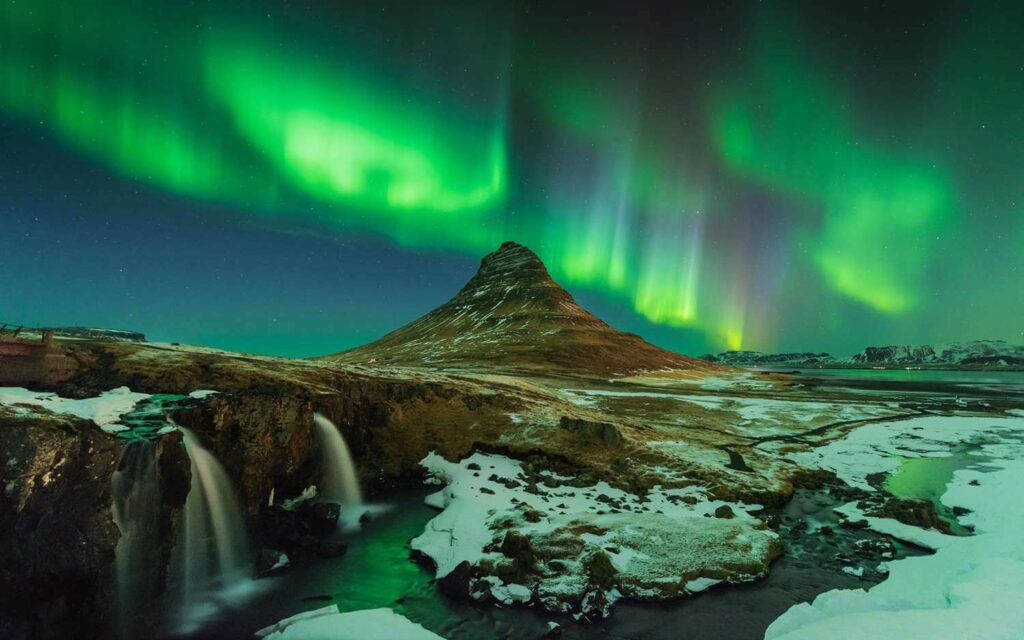
In the cold, dark skies of Iceland, a magical display occurs when the Aurora Borealis, or Northern Lights, dance and flicker in mesmerizing hues of green, pink, and purple.
The Northern Lights are created when charged particles, mainly electrons and protons, from the solar wind collide with the gases in Earth’s atmosphere.
These collisions excite the gases, causing them to emit light. Different gases emit different colors; oxygen produces green and red hues, while nitrogen can produce purples and pinks.
Earth’s magnetic field plays a crucial role in guiding these charged particles toward the polar regions. In the Northern Hemisphere, they’re known as the Aurora Borealis, and in the Southern Hemisphere, they’re called the Aurora Australis.
Iceland’s high latitude and proximity to the Arctic Circle make it a prime location for witnessing the Northern Lights.
- The Great Barrier Reef, Australia – Underwater Wonderland
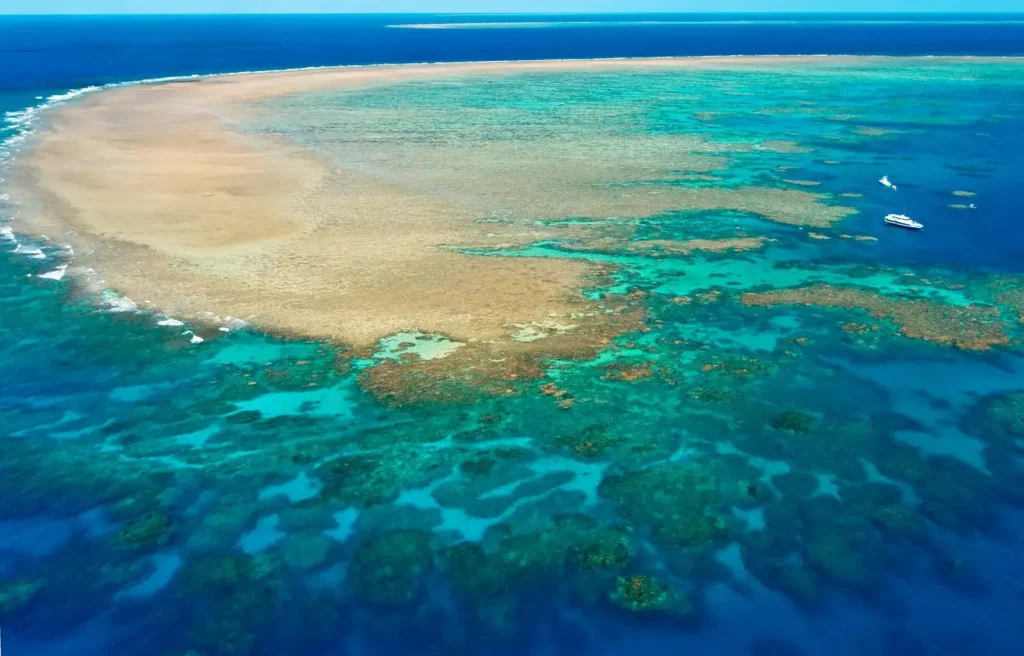
The Great Barrier Reef off the coast of Australia is the world’s largest coral reef system and a UNESCO World Heritage site.
The Great Barrier Reef is home to an incredible variety of marine life, including more than 1,500 species of fish, over 400 species of coral, and a multitude of other organisms.
This vast array of species makes it one of the most biodiverse ecosystems on Earth. From tiny, colorful fish to majestic marine mammals, the reef supports a complex food web and provides habitats for numerous species.
The reef is primarily composed of coral formations. Coral reefs are built by tiny coral polyps, which are animals that extract calcium carbonate from the ocean to form hard skeletons.
Over time, these skeletons accumulate, forming the structures we recognize as coral reefs. These reefs serve as vital breeding grounds, nurseries, and shelter for a wide range of marine life.
- Machu Picchu, Peru – Ancient Wonder
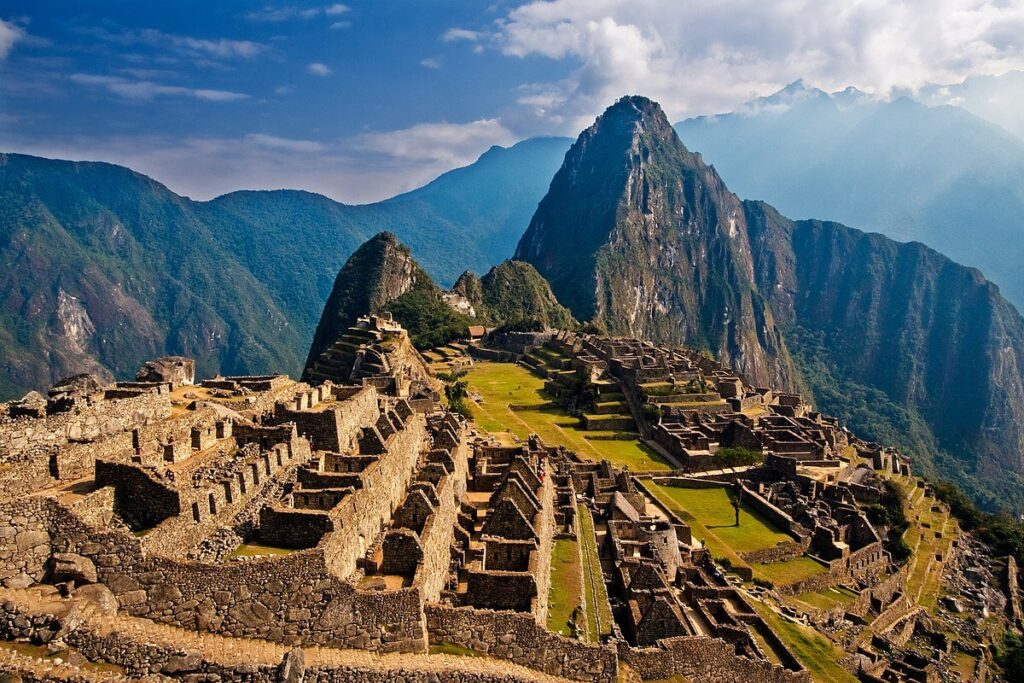
Nestled high in the Andes Mountains of Peru, Machu Picchu is an ancient Incan city that continues to captivate the world with its architectural splendor and breathtaking mountain views.
The intricate stonework and the spiritual ambiance of this UNESCO World Heritage site make it a must-visit destination for history enthusiasts and travelers seeking awe-inspiring vistas.
Machu Picchu was built during the height of the Inca Empire, which flourished in the Andean region of South America from the 15th to the 16th century.
The Incas were skilled engineers and architects who created impressive stone structures using precise cutting and fitting techniques.
- The Swiss Alps, Switzerland – Majestic Mountain Scenery

Switzerland’s Swiss Alps offer some of the most stunning mountain landscapes on the planet.
Towering peaks, shimmering glaciers, and picturesque villages create an unforgettable panorama. Whether it’s skiing in winter or hiking in summer, the Swiss Alps offer a breathtaking experience for outdoor enthusiasts.
The Swiss Alps cover a significant portion of Switzerland’s territory, occupying about 60% of the country’s total land area. The range is characterized by its rugged peaks, deep valleys, glacial lakes, and expansive alpine meadows.
Some of the most famous peaks include the Matterhorn, Eiger, Jungfrau, and Mont Blanc (though the latter is situated just outside Switzerland, in France).
- Santorini, Greece – Aegean Beauty
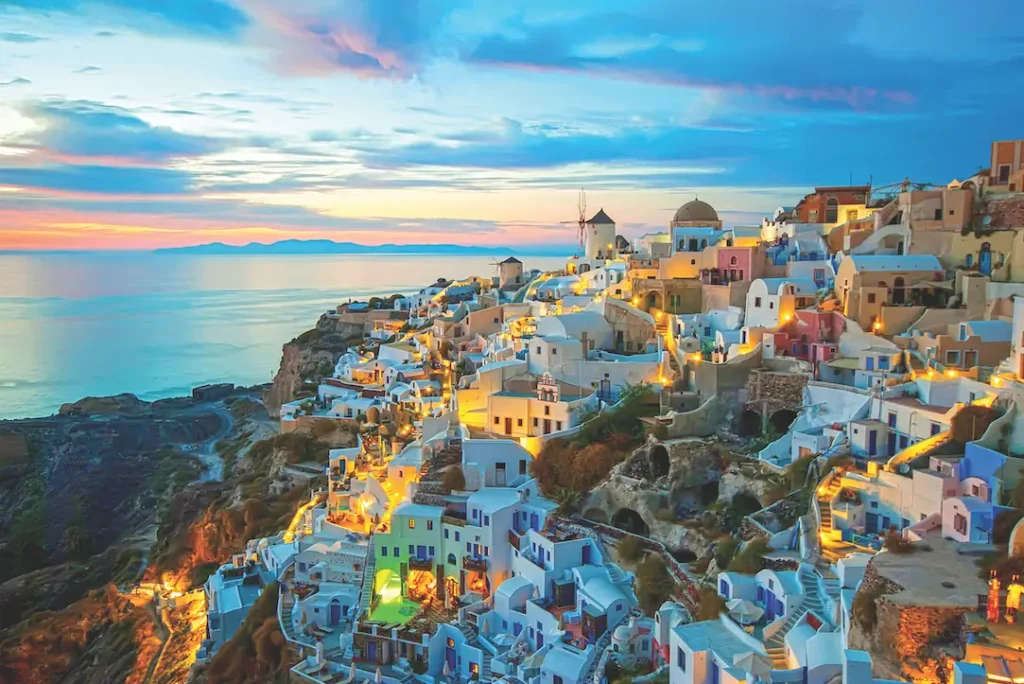
Santorini is a Greek island renowned for its captivating most beautiful places and picturesque sunsets.
With its white-washed buildings perched atop volcanic cliffs, overlooking the azure Aegean Sea, Santorini is a postcard-worthy destination that has stolen the hearts of travelers from around the world.
Santorini is actually the remnant of a volcanic caldera, which was formed by a massive volcanic eruption around 3,600 years ago. The island’s crescent shape, towering cliffs, and steep slopes provide a distinct and dramatic landscape.
Santorini is famous for its mesmerizing sunsets, which often paint the sky with hues of orange, pink, and gold. The village of Oia is particularly renowned for providing one of the best sunset-watching spots.
- Victoria Falls, Zambia/Zimbabwe – The Smoke That Thunders
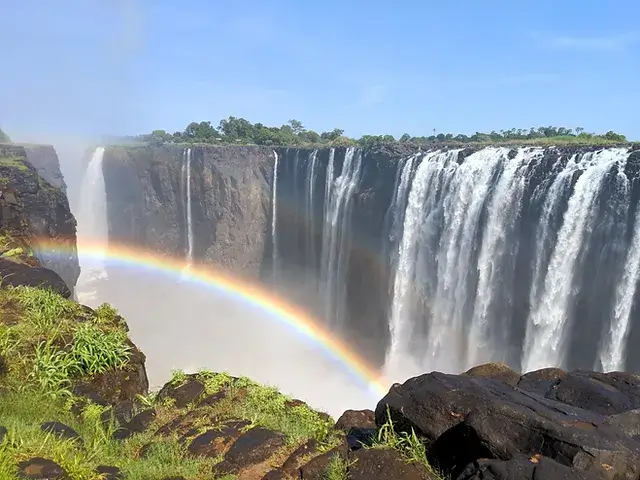
Victoria Falls, straddling the border between Zambia and Zimbabwe, is one of the world’s largest and most powerful waterfalls.
As the Zambezi River plunges over a cliff, it creates a thunderous cascade of mist and spray, earning its nickname “The Smoke That Thunders.” The sheer force and magnificence of Victoria Falls make it an awe-inspiring natural wonder.
Victoria Falls is formed by the Zambezi River as it drops over a massive basalt cliff, creating a spectacular curtain of falling water. The falls are about 1.7 kilometers (1.1 miles) wide and reach a height of up to 108 meters (354 feet), making them wider than Niagara Falls and taller than Iguazu Falls.
- Fiordland National Park, New Zealand – Untamed Wilderness
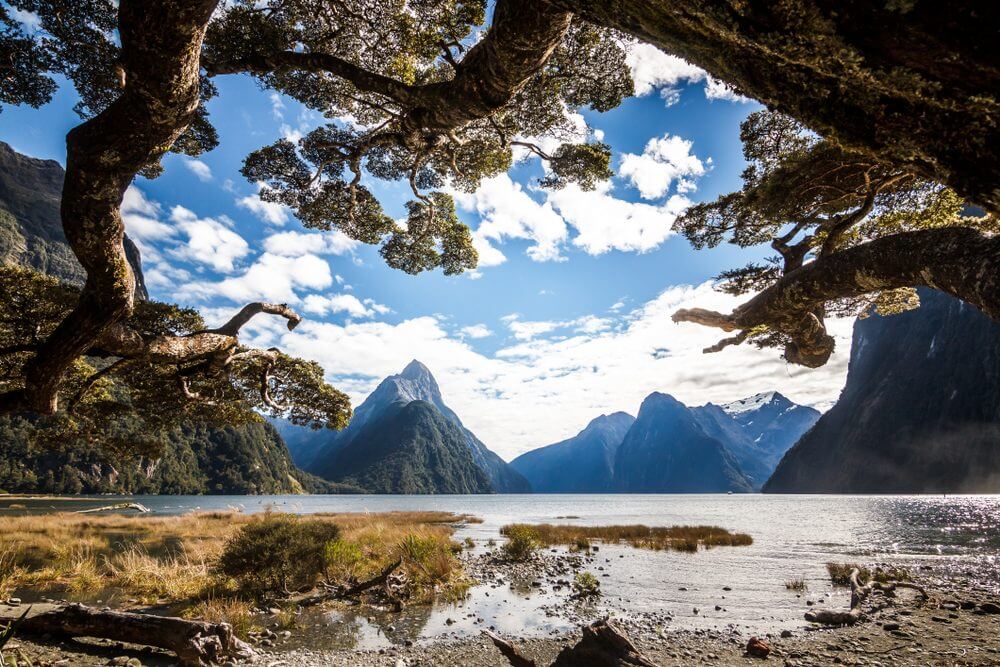
Fiordland National Park in New Zealand is one of the most beautiful places, a land of rugged beauty and untouched wilderness. Towering fjords, lush rainforests, and mirror-like lakes make this a paradise for nature lovers and hikers.
Milford Sound, one of the park’s iconic fjords, is a breathtaking sight that epitomizes the park’s natural splendor.
The park is characterized by its magnificent fjords, including the famous Milford Sound and Doubtful Sound.
These fjords were formed by glaciers carving through the mountains, creating deep channels that now fill with seawater. The result is a breathtaking landscape of towering cliffs, cascading waterfalls, and serene waters.
- Plitvice Lakes National Park, Croatia – Nature’s Watercolor Palette
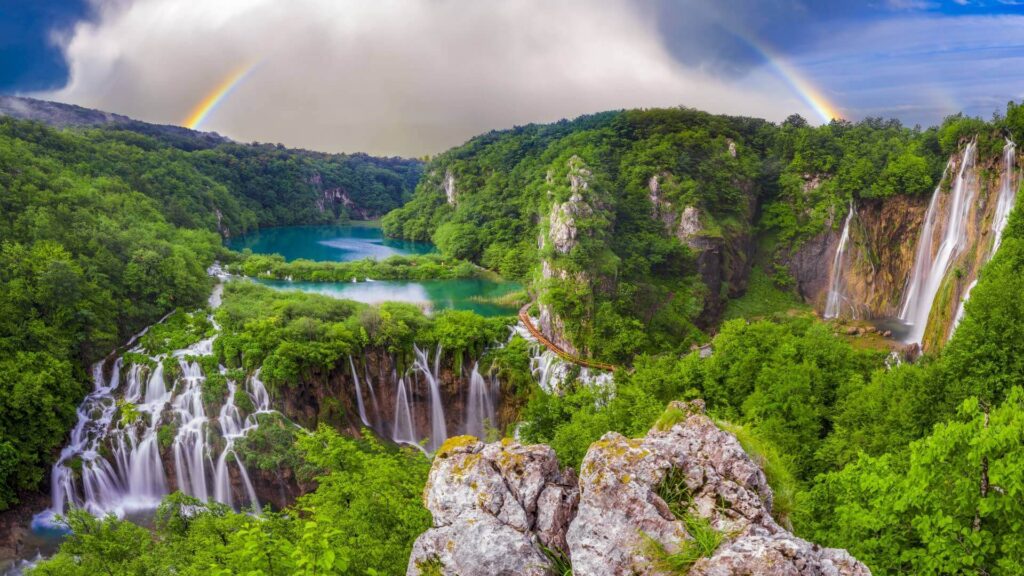
Plitvice Lakes National Park in Croatia is a fairytale destination, with a series of cascading lakes and waterfalls surrounded by lush greenery.
The lakes’ vivid turquoise waters and crystal-clear depths create a mesmerizing watercolor palette that leaves visitors in awe.
Plitvice Lakes National Park is famous for its numerous waterfalls, ranging from small cascades to larger falls. The most famous waterfall is Veliki Slap, or the “Big Waterfall,” which drops about 78 meters (256 feet) and is one of the park’s most impressive features.
- Taj Mahal, India – A Monument of Love

The Taj Mahal in Agra, India, is a symbol of eternal love and an architectural marvel. This iconic mausoleum, built in pristine white marble, stands as a testament to the beauty of Mughal architecture.
The Taj Mahal’s elegant design and surrounding gardens make it a breathtaking sight that has captured the hearts of millions.
The Taj Mahal was built between 1631 and 1653 by the Mughal emperor Shah Jahan in memory of his beloved wife Mumtaz Mahal, who passed away while giving birth to their 14th child.
The monument is a prime example of Mughal architecture, characterized by its symmetrical layout, use of white marble, intricate decorations, and incorporation of Persian, Indian, and Islamic design elements.
The top 10 most beautiful places in the world invite travelers to embark on journeys of wonder and discovery.
From natural wonders like the Grand Canyon and the Northern Lights to man-made masterpieces like Machu Picchu and the Taj Mahal, these destinations offer a glimpse of the boundless beauty that our planet has to offer.
Whether you’re an adventure seeker, a history enthusiast, or simply someone who appreciates the wonders of nature, these breathtaking locations are sure to leave an indelible mark on your heart and soul.


